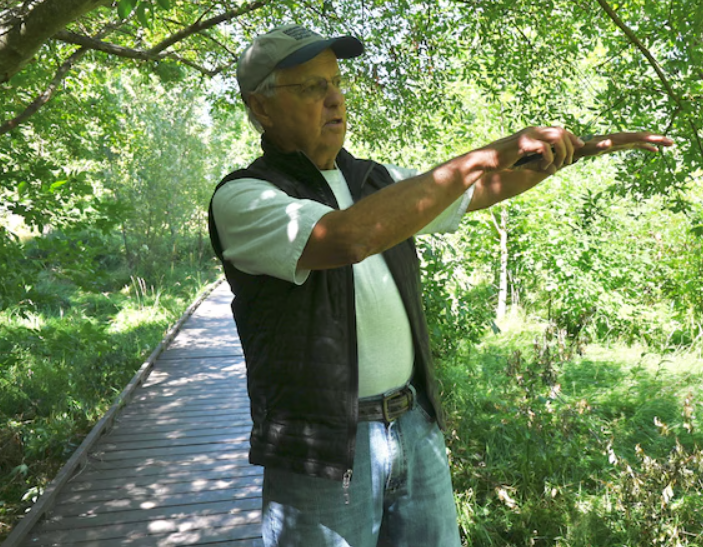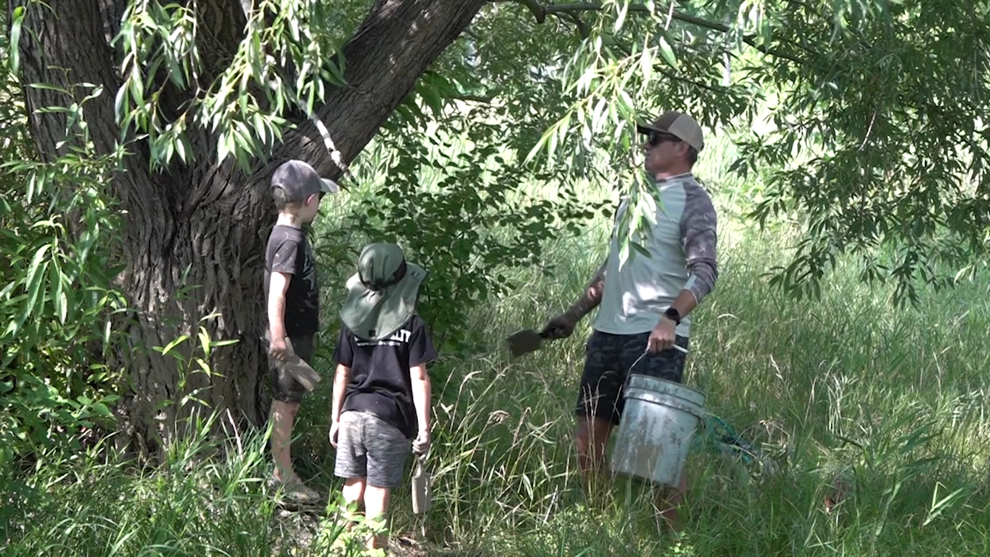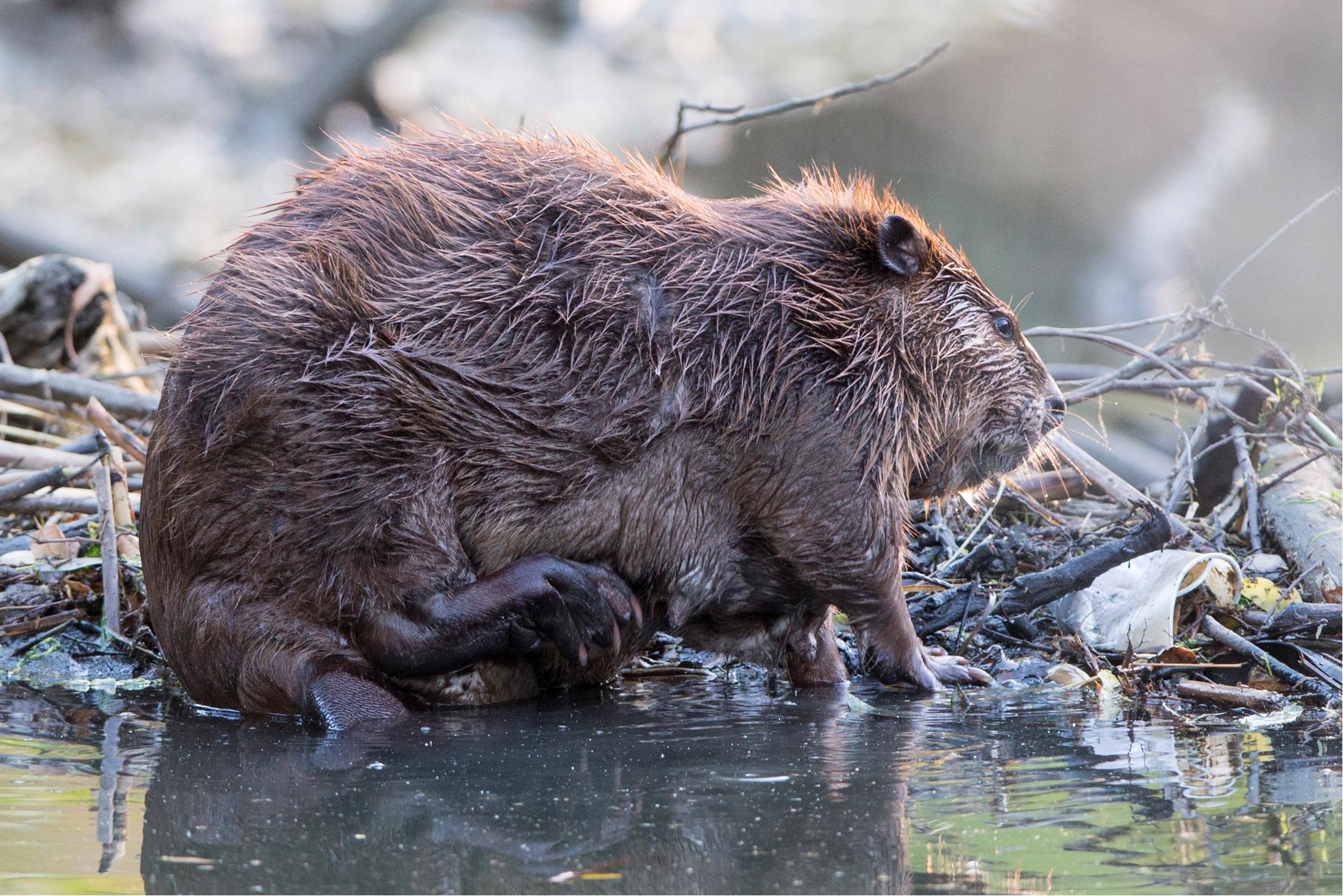Let’s go to Oregon for a look at some good beaver news:
On a Wednesday morning in July, a small crowd gathered near a gnawed-up tree on the side of a walkway at a Corvallis park. The Bruce Starker Arts Park and Natural Area is known to be home to the American beaver, and people in the crowd wondered aloud if they’d get a chance to see the creature that morning.
At the entrance of the park, a sign advertised beaver trail cams, introducing visitors to the prevalence of the species there.
About a year ago, however, city officials weren’t so happy with the beavers’ presence at the park. The sound of running water compelled the beavers to dam a nearby creek with twigs and branches. The dam grew so tall that the parking lot filled with murky water.
You know how it goes. A park is never happy about beavers until it is. A city can;t live with beavers until it does. A black woman can’t be elected president until she is.
Farmers and other landowners say beavers are a nuisance because of damage they leave behind. They dam canals, destroy crops and kill trees.
On the other hand, environmental groups say these flat-tailed mammals do a lot for the environment and we should learn to live beside them. Those groups recently helped pass some protections for beavers — and they see this as an opportunity to seek more.
Beavers are rodents, and the state defines rodents as predators because they eat crops. Oregon House Bill 3464, also known as the “beaver bill,” changed how the state classifies beavers, moving them from “predators” to “furbearers.” The law went into effect in July and requires a person to obtain a permit before killing beavers on private land. All beaver kills now need to be reported to the state.
It’s never possible until someone dreams it. It’s never doable until many people band together and make it harder to avoid doing it.
Beavers build dams to create wetlands where they can hide, yet the effects of their structures go beyond that. By damming streams, they create wetlands and ponds that provide a new habitat for plants and animals. These moist habitats mitigate droughts, create refuge for wildlife and help prevent wildfires.
Beavers are just pretty impressive,” said Bob Beschta, a retired Oregon State University hydrology professor and researcher. “It’s a little critter with a big, flat tail. They do all this wonderful work. It’s amazing.”
What I love about beavers is that they are never alone. They work along side family members or children or mates. They never stop and say “gee this is really hard”.
Along the walkway of Bruce Starker Park, surrounded by lush grasses and vibrant trees, Beschta explained that beavers need to be safeguarded because of their contributions to the ecosystem. Beschta and environmental groups say they still want more protections for beavers, particularly on public lands.
“Because we don’t have a lot of houses out there,” Beschta said. “We’re not irrigating. We don’t have cities. We don’t have structural impediments that beavers can mess up with their flooding.”
Beschta said the park is an example of how people can learn to live alongside beavers. To resolve the parking lot flooding, the city installed a pond leveler, which redirects water from one side of the dam to another location without disrupting the beavers’ dam.
Yes. Yes they can. We in Martinez happen to know that for a fact.
But farmers, irrigators and landowners say dealing with beavers — like when they chew on hazelnut trees, dam canals and flood properties — is expensive.
“They could take out hundreds of hazelnut saplings overnight and there’s no compensation to our farmers for that loss,” said Lauren Poor, the vice president of government and legal affairs for the Oregon Farm Bureau.
On top of that, the beaver bill requires lanwners to pursue “non-lethal action” before resorting to killing beavers. These are mitigation tools that could include installing pond levelers and wrapping trees, which prevent the beavers from gnawing at the bark.
Less trapping, More tail slapping! That’s what I say!
To help pay for those tools, Rep. Pam Marsh, D-Ashland, who sponsored the beaver bill, is pursuing a grant program for private property owners. The program would compensate private lndowners for these mitigation tools.
“I think it’s important for us to provide them with the support for doing the work in a productive way,” Marsh said.
Marsh is pursuing the grant program in the next legislative session. She said efforts like these are a crucial step in learning how to coexist with nature, and each other.
“The more I talk about beavers, the more I realize how fascinated and obsessed people are across the state around what beavers can do for us,” Marsh said.
Don’t I know it! Good for you and good for Oregon’s beavers.
 Join a national science project from your cottage doorstep this weekend
Join a national science project from your cottage doorstep this weekend












































